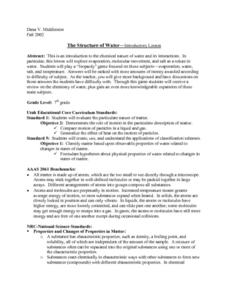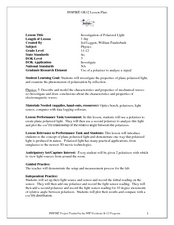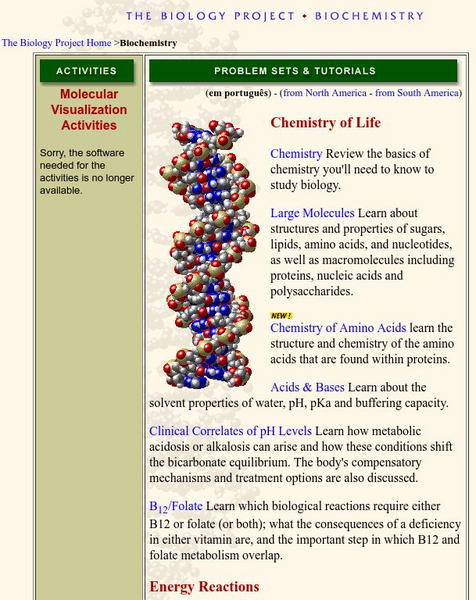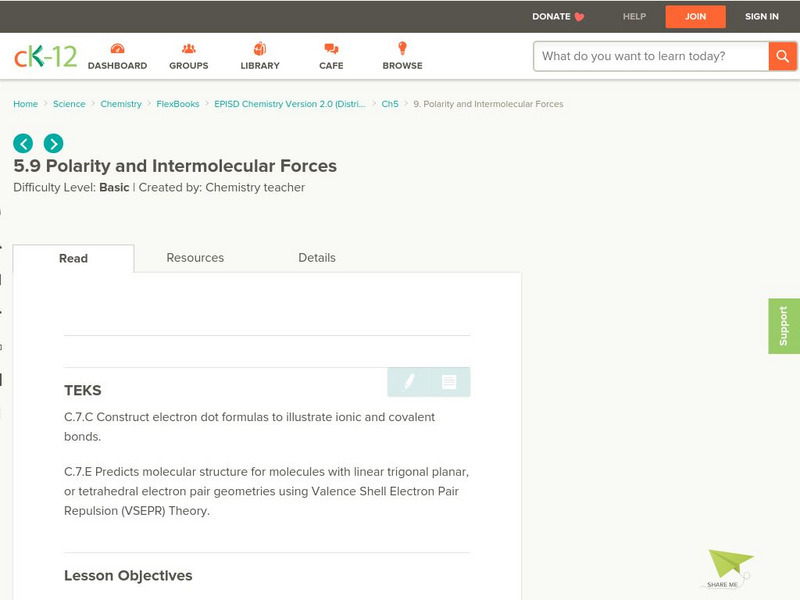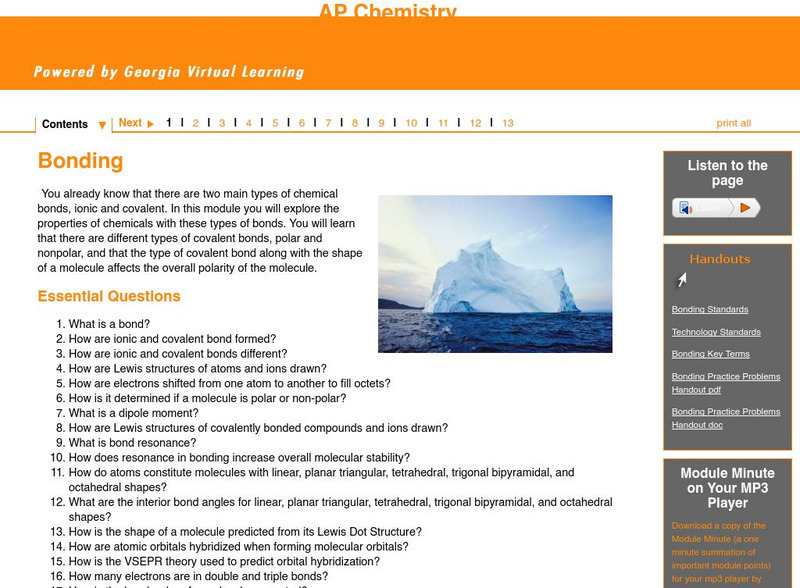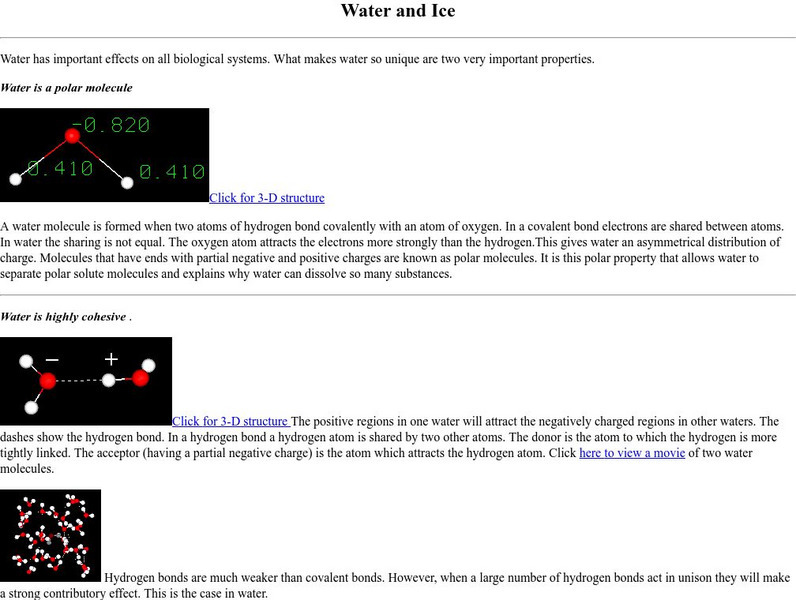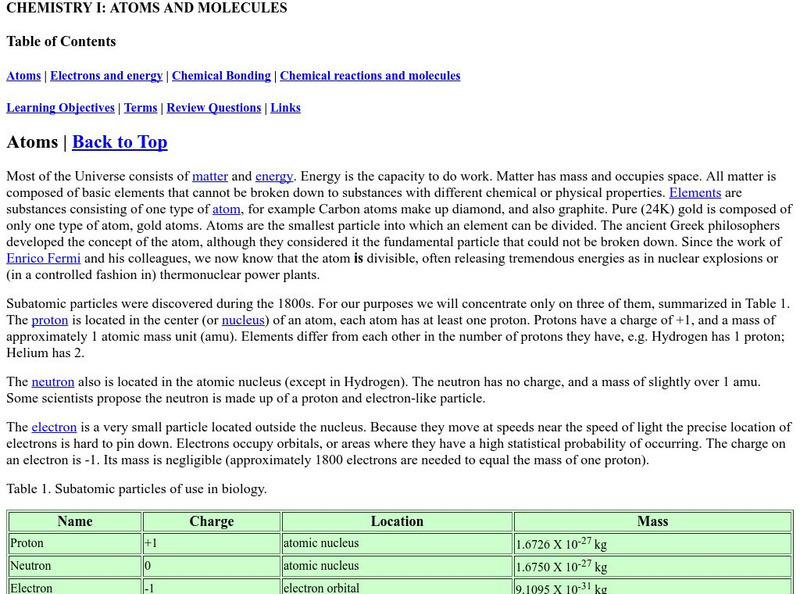Curated OER
Nervous Tissue
In this nervous tissue worksheet, students list and describe the functions of the nervous system and its two principle parts. Then they list and give the function and location of the six types of glial cells. Students also describe two...
Curated OER
The Chemical Nature of Water
Seventh graders simulate a Jeopardy game to examine the chemical nature of water. Among the topics featured are evaporation, water, salt, and temperature. finally, as review, 7th graders answer a battery of questions presented by the...
Curated OER
Investigation of Polarized Light
Students investigate how polorizers filter light. For this physics lesson, students record their data and plot their results using a computer logging software. They discuss practical applications of polarization.
Curated OER
Transmitter Hunt
Learners experiment with radio transmitters. In this transmission of waves lesson, students use an FM radio, an attenuate, and the frequency to locate a radio transmitter. Learners discuss outcomes.
Curated OER
Polarization
Eighth graders study the basic facts of polarization. In this light waves instructional activity students demonstrate some activities illustrating interference patterns.
Curated OER
Take a Dip: Sticky Water
Students complete lab activities to investigate the "sticky" properties of water, such as surface tension and capillary action, due to the polarity of the molecules.
Curated OER
Can Chromatography Separate A Pigment?
High schoolers separate a mixture of pigments with ion exchange chromatography and predict whether the ion-exchange matrix is positively or negatively charged based on the type of pigment bonded to the matrix.
Concord Consortium
Concord Consortium: Stem Resources: Molecular Self Assembly
A series of science simulations exploring how molecules assemble themselves and how scientists are learning to engineer their structure. Students will discover what patterns molecules form with interactive lessons. At the end there is a...
Concord Consortium
Concord Consortium: Science of Atoms and Molecules: Nucleic Acids and Proteins
Through this activity, students work with macromolecules, proteins and nucleic acids. The focus is on the atomic structure of proteins, how linear polymers are made, and the surface charges of the resulting polymers. . Multiple-choice...
TED Talks
Ted: Ted Ed: How Polarity Makes Water Behave Strangely
Water is both essential and unique. Many of its particular qualities stem from the fact that it consists of two hydrogen atoms and one oxygen, therefore creating an unequal sharing of electrons. From fish in frozen lakes to ice floating...
University of Arizona
University of Arizona: Biochemistry
Problem sets, tutorials, and activities related to biochemistry.
University of Colorado
University of Colorado: Ph Et Interactive Simulations: Molecule Polarity
When is a molecule polar? Change the electronegativity of atoms in a molecule to see how it affects polarity. See how the molecule behaves in an electric field. Change the bond angle to see how shape affects polarity. See how it works...
University of Colorado
University of Colorado: Ph Et Interactive Simulations: Molecule Polarity
An interactive simulation that teaches about polarity, electronegativity, and bonds by changing the electronegativity of atoms and bond angles in a molecule to see how it affects polarity. This simulation can either be downloaded or...
Museum of Science
Museum of Science and Industry: Online Science: Build an Electric Motor
Step-by-step illustrated instructions show how to build a simple electric motor using everyday materials to make a wire coil spin. An explanation of the science involved is given at the end, as well as tips on troubleshooting any...
CK-12 Foundation
Ck 12: Polarity and Intermolecular Forces
[Free Registration/Login may be required to access all resource tools.] The following online tutorial describes how the electronegativity difference between two atoms in a covalent bond results in the formation of a nonpolar covalent,...
Georgia Department of Education
Ga Virtual Learning: Ap Chemistry: Bonding
In this module students explore the properties of chemicals with covalent and ionic bonds. Students learn that there are different types of covalent bonds, polar and nonpolar, and that the type of covalent bond along with the shape of a...
Concord Consortium
Concord Consortium: Stem Resources: Chemical Bonds
By working through this web-based activity, students differentiate between ionic, non-polar covalent, and polar covalent bonds. Specifically, distinctions are made between bonding types based on orbital shapes and electronegativity...
Concord Consortium
Concord Consortium: Stem Resources: Boiling Point
An interactive tool where students can explore why different substances have different boiling points. They will learn how the forces of attraction in polar and non-polar substances affect their properties, e.g., the boiling point.
New York University
New York University: About Water and Ice
Page uses movies and 3D images to explain how properties of water relate to polarity and hydrogen bonding.
University of Arizona
Ua: Chemistry Tutorial
This general tutorial begins with an explanation of the polarity of the water molecule and the effects this polarity has on the properties of water. Goes on to introduce organic molecules and has a thourough tutorial on the third page.
Texas Instruments
Texas Instruments: Geometries and Polarities of Compounds
In this StudyCard activity, students are asked to describe the geometry and polarity of several molecules and ions. Geometries covered include linear, bent, trigonal planar, trigonal pyramidal, and tetrahedral. Students will need to have...
Ohio State University
Ohio State University: Electronegativity & Bond Polarity
Excellent graphics help this page explain the relationship between electronegativity and bond polarity.
Estrella Mountain Community College
Online Biology Book: Chemistry I: Atoms and Molecules
In this online biology textbook, learn about atoms and molecules as they relate to life. Find out about topics such as electrons and energy, chemical bonding, and chemical reactions.
Michael Blaber, PhD
Fsu: Basic Concepts of Chemical Bonding: Polarity and Electronegativity
Florida State University provides an explanation of electronegativity of elements and its affect on bond type.



